London Coffee Houses: A History of Penny Universities
The coffee house of London, home for merchants, politicians, gossip. This article explores Georgian London history. An Antipodean travel company serving World Travellers since 1983 with small group educational tours for senior couples and mature solo travellers.
29 Nov 22 · 9 mins read
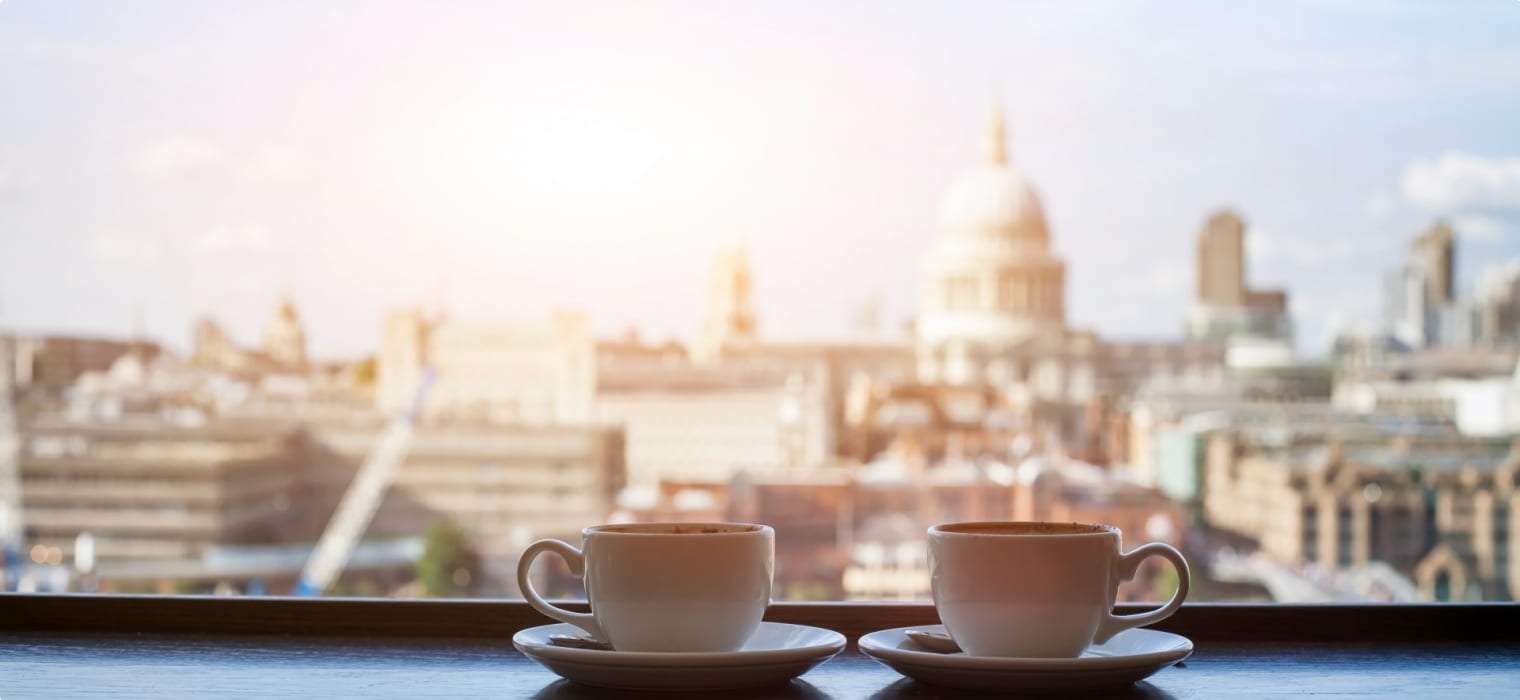
London Coffee Houses in the 17th and 18th Centuries
In the late 1600s and early 1700s, there were as many as 3,000 coffee houses spread throughout London. These were popular public social places, where men of all strata of society could go to meet and talk to each other. All were welcome for the price of a penny, covering a cup of coffee and admission. The coffee itself, a new and exotic export from Turkey, was pretty dreadful compared to today’s standards – it was even commonly referred to as “mud”! Nevertheless, the caffeine in it was an addictive stimulant, valued for fuelling intellectual debate, gossip, and conversation about the latest news.
This article explores the history of London coffee houses in the 17th and 18th centuries. It is intended as background reading for Odyssey Traveller’s tours to London, England. We delve into this time period particularly during our Agrarian and Industrial Britain Tour, as well as our Canals and Railways in the Industrial Revolution Tour. Or for an even more extensive exploration of London, you can join our London Short Tour or our Queen Victoria’s Great Britain Tour. All tours move in small groups of 6-12 people, designed for mature and senior travellers.
Much of the information used in this article is drawn from Margarette Lincoln’s London and the 17th Century.

London’s Early Coffee Houses
London’s first coffee house opened in 1652, after the merchant Daniel Edwards returned from Smyrna (Izmir) bringing a Greek servant called Pasqua Rosee to prepare the drink for himself and his family. When acquaintances started turning up each day just as it was being brewed, Edwards saw a business opportunity. He accordingly set up a stall in St Michael’s Alley off Cornhill, with Pasqua as the manager, known as Pasqua Rosee’s Head.
Coffee was an immediate hit, with Pasqua selling over 600 dishes of coffee a day within just two years of opening up. Others were quick to copy, as more coffee stalls and eventually permanent coffee houses began to open up all over London. By the end of the decade practically every street had a coffee house. A survey by City Magistrates in May 1663 recorded eighty-two in the city alone. By the early 18th century, London had more than any other city in the western world, save Constantinople.
At first the coffee houses were quite similar to each other. However, as stiffer competition grew over time, each came to develop its own character to attract particular clientele. Many became associated with certain businesses, professions, interests, or attitudes and would focus on specific topics of discussion.
Will’s in Covent Garden, for example, was favoured by the Wits. Will’s, close to the King’s Theatre in Drury Lane, was used by actors. Garraway’s in Exchange Alley, Cornhill, was linked to banking but also favoured by scholars. The Young Man’s coffee house near Charing Cross was the haunt of military types and notorious for gambling. And the Grecian, first set up at Wapping Old Stairs around 1665, moved to Devereux Court, Temple Bar, where it was favoured by lawyers and scholars.

Places of Knowledge and Rational Debate
Coffee houses were places debate and decent talk, where people could meet other local residents to discuss intellectual matters, exchange ideas, tell tales, network, and do deals. Previously, men had gathered in ale houses to have discussions and conduct business deals. However, they were often noisy, rowdy and, thanks to the ale, unproductive places. Meanwhile, other public spaces such as theatres were renowned for lecherous conversation. As the advantages of drinking a coffee and keeping a clear head soon became apparent, coffee houses came to offer an alternative – a quieter and calmer space, where people could engage in more serious and sober conversation.
All kinds of intellectual topics were discussed, from politics and political scandals to literature and poetry, commerce, religion, current events, and debates surrounding philosophy and science. Men flocked to the coffee houses in search of knowledge and understanding, so much so that the places came to be known as ‘Penny Universities’ – a penny being the price one paid to purchase a cup of coffee. After the restoration, certain coffee houses even began to offer their own lessons, in subjects such as French, Italian, Latin, dancing, fencing, poetry, mathematics, and astronomy.
All were welcome to the coffee houses, having paid a penny for a cup of coffee. No matter their position in society, once inside they were freed from the social constraints that normally governed polite conversation. Talking to strangers was actively encouraged and so customers could easily make acquaintances without formal introduction. They sat around large, communal tables, listening to conversations and contributing whenever they wanted. Polite, civil, and rational conversations and debates were considered essential conduct.
Much of the conversation was around the news of the day. Coffee house keepers provided free newspapers – both printed and manuscript – which were passed from hand to hand or read aloud for discussion. By 1700 the metropolis had several newspapers besides the London Gazette, including the Post Boy, Post Man and Flying Post, published three times a week and distributed to coffee houses. Coffee houses also displayed the myriad pamphlets that tumbled off the press and some even kept small libraries. Runners also went round to different coffee houses to report the latest current events. As such, frequent customers felt themselves to be men of standing, the kind of person who was up to date with current affairs.
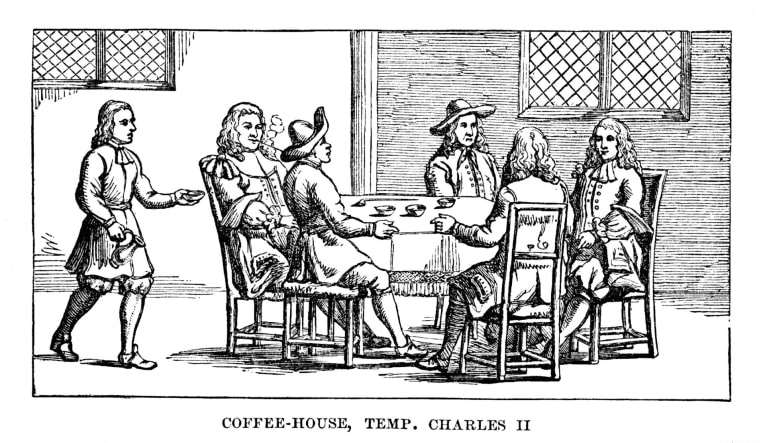
Coffee and London’s Economic Growth
Before the advent of hot, non-alcoholic drinks, most Londoners were either slightly or very drunk on a daily basis. Untreated water from wells and rivers were judged dangerous to drink, so people of all ages drank beer. A heavy drinking culture permeated all social levels. But with the arrival of coffee, people could finally be sober. This helped to lay the foundations for incredible economic growth as people could think clearly for the first time, unleashing a wave of creativity and innovation.
Indeed, several of Britain’s great institutions can trace their roots back to the coffee houses of the 17th and 18th centuries. The London Stock Exchange, for example, evolved from Jonathan’s coffee house in Exchange Alley, where from 1698 it was used to post the prices of stocks and commodities. Lloyds Coffee House, opened by Edward Lloyd on tower Street in 1688, meanwhile, became a popular place for merchants, sea captains, and shipowners to discuss insurance deals. This eventually led to the world-famous insurance market, Lloyd’s of London. The major auction houses, Sotheby’s and Christie’s, also originated in coffee houses. Institutions like these helped to spawn the credit, security and markets that facilitated the dramatic the expansion of Britain’s network of global trade in Asia, Africa, and America.

Women
Women were not totally excluded from coffee houses. However, historians point to only a handful of instances that they would visit them, such as partaking in business ventures, in gambling coffee houses, and while acting in the service of her household at auctions within coffee houses.
For the most part their participation within coffeehouses was unwelcomed. Conversation centred on what were considered male issues, such as politics, business, and cultural criticism. Men therefore saw coffeehouses as places where they could partake in conversation without associating with women. As such, respectable women avoided most coffeehouses, patronising only the better establishments, and then merely at certain times of day when accompanied by their menfolk.
Unsurprisingly, women often vocalised complaints against the coffee houses. They became especially frustrated at the amount of time their husbands would spend in such establishments. Criticisms of coffee consumption, including the ‘Women’s Petition Against Coffee’ in 1674, claimed that it made men sterile and impotent, leaving them little better than eunuchs.
The Dark Side of Coffee Houses
Coffee houses were not uniformly places of polite conversation, intellectual debate, and sober business. The frenetic and filthy streets of Stuart London often spilled over into the coffee houses, where standards of personal hygiene remained low. The coffee houses could also still be rowdy, as drinkers often went there from taverns and alehouses to sober up, and some establishments even sold alcohol. One in particular was described as selling brandy and cock-ale (beer flavoured with a parboiled, skinned, and gutted cock, spices, and fruit).
Polite and rational discourse, meanwhile, was not always the case. Coffee houses were notoriously liable to spread fake news, while the quality of debate could lapse into windy discourse. At times, the energetic debate would bubble over into argument, which could get violent. Since men wore swords, murders even took place inside and duels were fought outside.
Other coffee houses catered to the less learned men, focusing more on entertainment than knowledge. These would be linked to sedition as well as criminal activity, involved in London’s underworld of theft and receivership. Some, mostly in the Covent Garden area, even doubled as brothels.
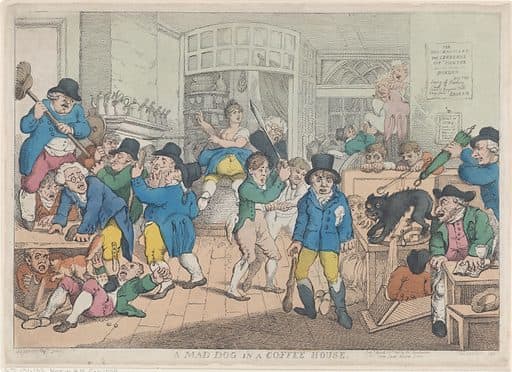
An Attempted Crackdown on Coffee Houses
Because people of all social classes were allowed into the coffee houses, they soon became associated with equality and republicanism. Royalists attacked them, promoting ale-drinking instead as more patriotic than sipping coffee and less likely to lead to sedition. Satirists mocked the health benefits of drinking coffee, claiming that it damaged the trade of brewers and vintners, and encouraged the lower ranks to meddle in topics beyond their intelligence.
In 1675, King Charles II, a long-time critic, attempted to crackdown on the coffee houses. On 29 December he issued a proclamation announcing their closure within twelve days. The proclamation stated that they were ‘the great resort of Idle and disaffected persons’, that they encouraged tradesmen to waste time better spent at their business and spread sedition. Of course, at the heart of his opposition was the fact that the coffee houses allowed for informed political debate, which had previously been left solely to the political elite.
The royal proclamation triggered an immediate outcry. After all, coffee houses provided a variety of services, offering spaces for business and pleasure under one roof. In essence, they had become necessary to daily life. Many thought the king’s proclamation smacked of illegal tyranny and that alcohol, not coffee, was linked with discord and faction. Opponents of closure repeated the view that coffee houses were forums of debate, which moderated extreme opinions and allowed for rational conclusions.
Within only ten days the king was forced to back down. As much as he disliked them, coffee houses were now embedded in city life.
Decline of the Coffee Houses
Towards the end of the 18th century, coffee houses begun to rapidly decline in popularity in London. The rise of the exclusive club was a major reason for this. Some coffee houses began to exclude strangers in order to appease their regular, higher-standing clientele. They began charging membership fees and prices went up to up over a penny a coffee. As such, coffee houses ceased to be accessible places for all in society, giving way to the exclusive gentlemen’s club that grew popular in the late 18th century.
Tea’s increasing demand at the time also contributed to the decline if the coffee houses. Tea quickly became an accessible drink due to the East India Company’s direct trade routes, and the ease to which it could be prepared. It became fashionable at court and tea houses grew in popularity, accessible to clientele from both sexes. Coffee could no longer compete with the nation’s changing tastes.
Tour of London
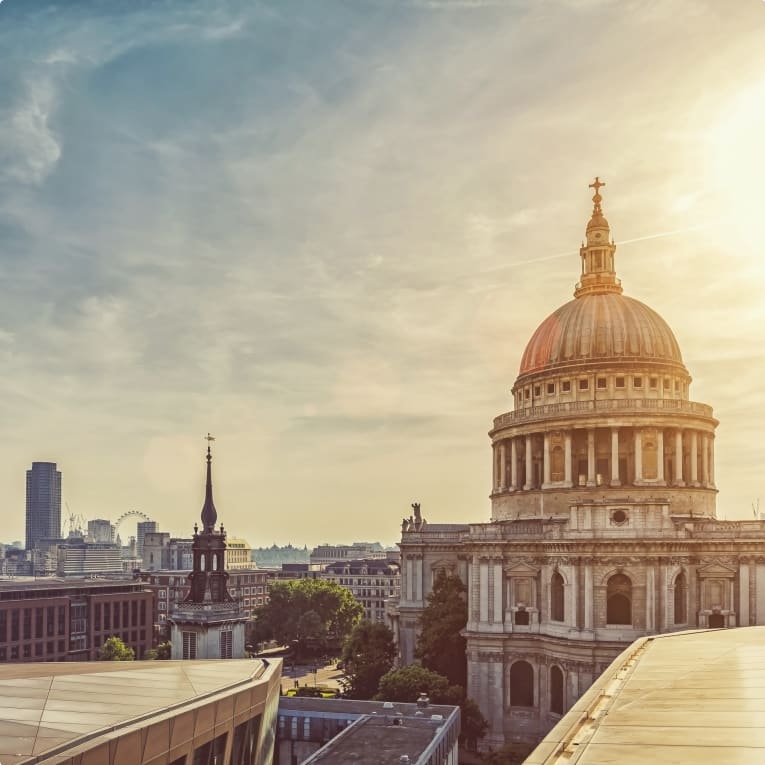
The majority of Odyssey Traveller’s tours of England pass through London and many spend a few days there exploring the treasure trove of sights and attractions. A trip to England is not complete without visiting the country’s most important city and it is hard to get a sense of both England’s national identity and colourful history without visiting its beating heart.
London in the 17th-18th centuries is explored during Odyssey Traveller’s Agrarian and Industrial Britain Tour, as well as the Canals and Railways in the Industrial Revolution Tour. In these tours, you will learn how the Industrial Revolution after the Industrious Revolution brought significant and lasting change to London and across Britain. These tours each spend two days in London, before venturing to other key locations of the time period, such as Manchester, Bristol, Liverpool, and York.
For a longer stay in London, Odyssey Traveller’s Queen Victoria’s Great Britain tour spends four nights in the city and visits some incredible attractions including the Victoria & Albert Museum, Charles Darwin’s house and Sir John Soane’s Museum. Similarly, the Gardens of Britain tour spends four nights in London where travellers will get to visit some of the most beautiful locations including Hever Castle and Sissinghurst Castle.
Or, If you take part in one of our other tours of England and wish to spend more time in London, you may be interested in our London Short Tour, which can be added at the beginning or end of another tour and offers four full days exploring London with an experienced and knowledgeable guide.
Odyssey Traveller has been serving global travellers since 1983 with educational tours of the history, culture, and architecture of our destinations designed for mature and senior travellers. We specialise in offering small group tours partnering with a local tour guide at each destination to provide a relaxed and comfortable pace and atmosphere that sets us apart from larger tour groups. Tours consist of small groups of between 6 and 12 people and are cost inclusive of all entrances, tipping and majority of meals. For more information, click here, and head to this page to make a booking.
Articles about London and the United Kingdom published by Odyssey Traveller.
- The London Underground
- Victorian Women’s Fashion
- Queen Victoria’s Britain, Part 1 and Part 2
- Understanding British Churches
- Studying Gargoyles and grotesques
- Georgian Architecture
- London’s Victorian Architecture
For all the articles Odyssey Traveller has published for mature aged and senior travellers, click through on this link.
External articles to assist you on your visit to London.
- National Parks UK
- William the Conqueror (History.com)
- Queen Victoria
- The Royal Parks of London
- The Royal Mausoleum
Related Tours
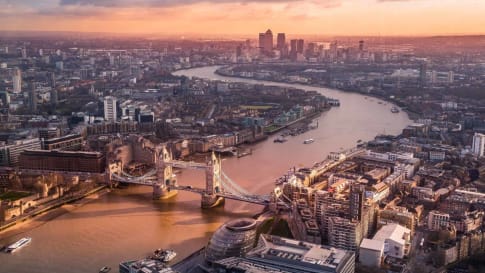
6 days
Apr, SepLondon Short Tour
Visiting England
A small group tour of London is a collection of day tours that visit and explore through the villages of the city. This escorted tour includes a journey out to Windsor castle. We explore Contemporary and learn about Roman Walled city, Medieval, Victorian London and the contemporary city today.
From A$6,995 AUD
View Tour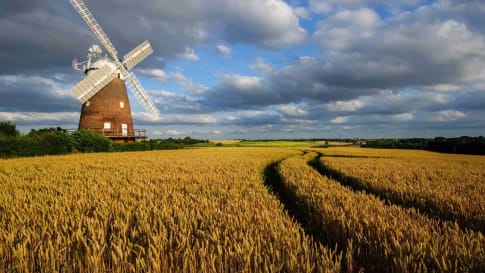
23 days
AprAgrarian and Industrial Britain | Small Group Tour for Mature Travellers
Visiting England, Wales
A small group tour of England that will explore the history of Agrarian and Industrial period. An escorted tour with a tour director and knowledgeable local guides take you on a 22 day trip to key places such as London, Bristol, Oxford & York, where the history was made.
From A$17,275 AUD
View Tour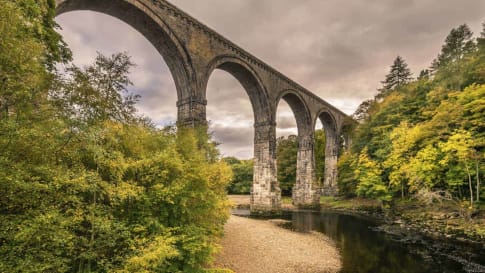
23 days
Oct, Apr, SepCanals and Railways in the Industrial Revolution Tour | Tours for Seniors in Britain
Visiting England, Scotland
A small group tour of Wales, Scotland & England that traces the history of the journey that is the Industrial revolution. Knowledgeable local guides and your tour leader share their history with you on this escorted tour including Glasgow, London, New Lanark & Manchester, Liverpool and the Lake district.
From A$17,860 AUD
View Tour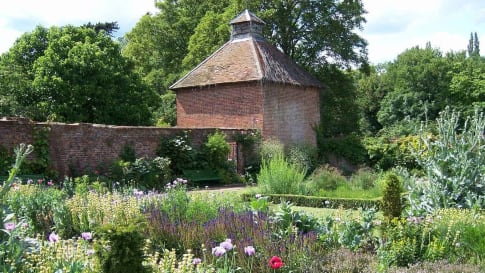
16 days
JunBritish Gardens Small Group Tour including Chatsworth RHS show
Visiting England, Scotland
From A$16,895 AUD
View Tour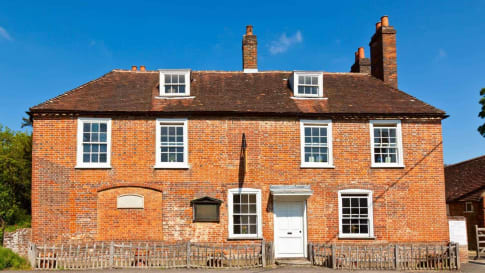
22 days
AugDiscovering the art and literature of England: Jane Austen, Shakespeare, and more
Visiting England
Stratford upon Avon, Shakespeares birthplace and Anne Hathaway's cottage as well as the Lake district a UNESCO World site and Dicken's London are part of guided tour for a small group tour of like minded people learning about the art and literature of England. Your tour leader and local guides share day tour itineraries to create a unique travel experience.
From A$17,765 AUD
View Tour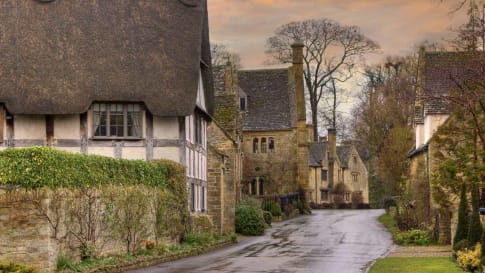
19 days
Jun, SepEngland’s villages small group history tours for mature travellers
Visiting England
Guided tour of the villages of England. The tour leader manages local guides to share their knowledge to give an authentic experience across England. This trip includes the UNESCO World heritage site of Avebury as well as villages in Cornwall, Devon, Dartmoor the border of Wales and the Cotswolds.
From A$16,995 AUD
View Tour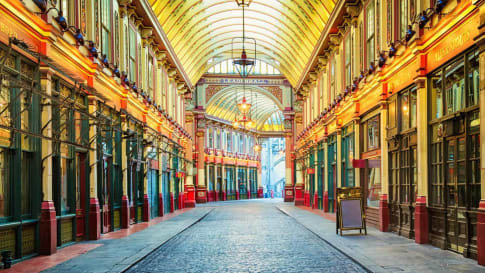
21 days
Sep, JunQueen Victoria's Great Britain: a small group tour
Visiting England, Scotland
A small group tour of England that explores the history of Victorian Britain. This escorted tour spends time knowledgeable local guides with travellers in key destinations in England and Scotland that shaped the British isles in this period including a collection of UNESCO world heritage locations.
From A$15,880 AUD
View TourRelated Articles
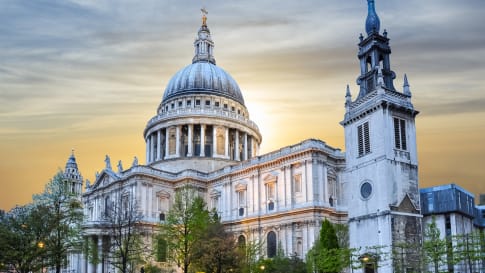
18th Century London
London, the Romans arrived and here on the Thames over time the city has grown. Article shares the history of evolution in the 18th century as the Industrial revolution gathers pace. An Antipodean travel company serving World Travellers since 1983 with small group educational tours for senior couples and mature solo travellers.
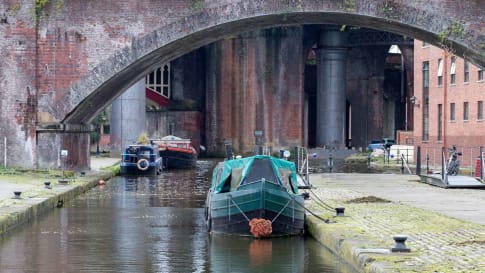
Britain: First Industrial Nation
Britain: The First Industrial Nation In the mid-18th century, the Industrial Revolution was largely confined to Britain. Historians and economists continue to debate what it was that sparked the urbanisation and industrialisation that would change…
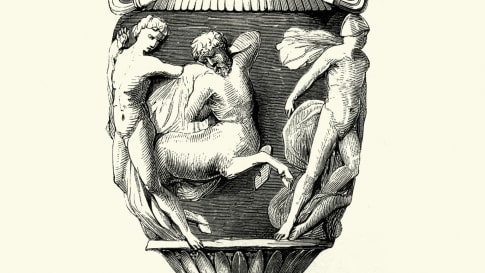
England's Consumer Revolution
Article about the arrival of luxury brands and leisure time in England. Story supports small group tours to Britain and it's history from the Bronze age to the Romans, Vikings, Medieval period through to the industrial revolution and the wealth created. An Antipodean travel company serving World Travellers since 1983 with small group educational tours for senior couples and mature solo travellers.

Exploring Jane Austen’s England
Exploring Jane Austen’s England Jane Austen The reach and magnitude of Jane Austen’s influence on modern readers may make one forget that she only had six novels to her name (three of which were published…
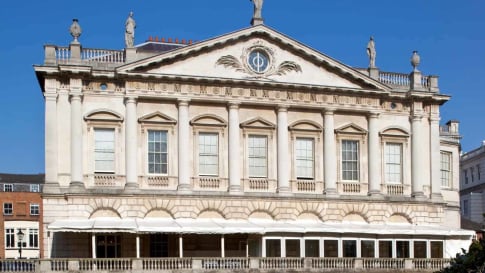
Georgian Style of Architecture: Definitive Guide for Seniors
Article to provide the senior couple or mature solo traveler with an appreciation of the influence of Georgian Architecture in Britain when on a small group educational tour.
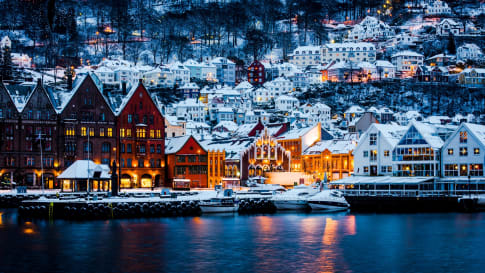
Hanseatic League
An Article on the early trading of Germany and the Baltic states by an Antipodean travel company serving World Travellers since 1983 with small group educational tours for senior couples and mature solo travellers who are curious.
Yorkshire, England in the 17th-19th Centuries
Article to support escorted small group tours to Northern England for senior couples and mature solo travellers. Learn and explore not only about Yorkshire and walking the Wainwright, but Durham Newcastle, the romantics of the Lake district or the inspiration for English literature.


